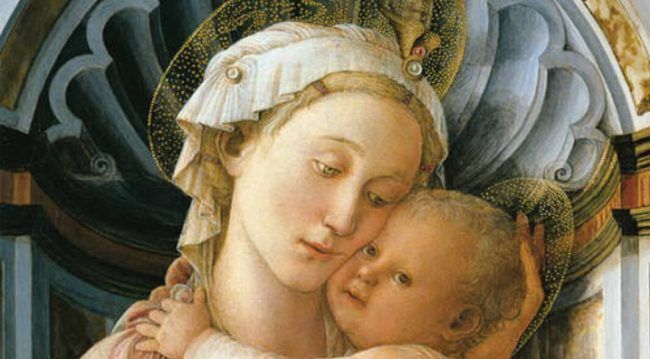Contemplation & Christmas
Desiring something a little deeper this Christmas?
Something that will carry you for the eight days of Christmas and into the new-year?
Try this excerpt from Seek That Which Is Above (Pope Emeritus Benedict XVI), Ignatius Press, 2007.

Marian Contemplation Leads to the Heart of the Mystery
(Excerpts)
Next to St John, as is well known, it is above all St. Luke who is the interpreter of the Marian mystery.
He stresses one particular feature of the picture of Mary that was important to him, and thus became important for the tradition that has come down through him, when he says three times that Mary kept the word in her heart and pondered it (Luke 1:29 2:19 2:51).
First of all, then, she is betrayed as a source of the tradition.
The word is kept in her memory. Therefore she is a reliable witness for what took place. But memory requires more than a merely external registering of events. We can only receive and hold fast to the uttered word if we are involved inwardly.
If something does not touch me, it will not penetrate. It will dissolve in the flux of memories and lose its particular face.
Above all it is a fact that understanding and preserving what is understood go together. If I have not really understood a thing, I will not be able to communicate it properly. Only by understanding do I receive reality at all and understanding, in turn, depends on a certain measure of inner identification with what is to be understood.
It depends on love. I cannot really understand something for which I have no love whatsoever.
So the transmission of the message needs more than the kind memory that stores telephone numbers. What is required is a memory of the heart in which I invest something of myself. Involvement and faithfulness are not opposites. They are interdependent.
In Luke, Mary stands as the embodiment of the church’s memory. She is alert, taking events in and inwardly pondering them. Thus Luke says that she ‘kept’ them (lit., ‘preserved them together’) in her heart, she ‘pondered’ them (lit., ‘put them together’) and ‘kept them faithfully’ (lit., ‘held onto them’).
Mary compares the words and events of faith with the ongoing experience of her life and thus discovers the full human depth of each detail, which gradually fits into the total picture.
In this way faith becomes understanding and so can be handed on to others. It is no longer a merely external word, but is saturated with the experience of a life, translated into human terms. Now it can be translated, in turn, into the lives of others.
Thus Mary becomes a model for the church’s mission.
That is, that of being a dwelling place for the word, preserving it and keeping it safe in times of confusion, protecting it, as it were, from the elements.
Hence she is also the interpretation of the parable of the seed sown in good soil and yielding fruit 100 fold (Mark 4).
She is not the thin surface earth that cannot accommodate roots. She is not the barren earth that the sparrows have pecked bare. Nor is she overgrown by the weeds of affluence that inhibit new growth.
She is a human being with depth. She lets the word sink deep into her.
And so the Church must be a realm of quiet, a place of meditation and silence [and stillness].
This is the only way in which we can enjoy real progress, progress not only in ‘having’ but in depth of ‘being.’


